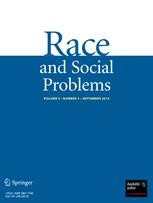Racism on college campuses is rooted in the small things people say and do
Study finds students who engage in microaggressive acts are likely to endorse colorblind, symbolic and modern racist attitudes
Heidelberg | New York, 31 August 2017

While overt and blatant expressions of prejudice seem to have declined on American university campuses over the last few decades, racism is still evident in the small things that white students say and do. This is especially true for those who think that minorities are too sensitive about race issues, says Jonathan Kanter of the University of Washington in the US. He is the lead author of a study in Springer’s journal Race and Social Problems.
The study is the first to ask white American students how inclined they are to deliver statements that contain so-called microaggressive messages about people of other races. Microaggressive messages refer to brief and commonplace daily verbal, behavioral, and environmental indignities, whether intentional or unintentional, which communicate hostile, derogatory, or negative racial slights and insults. These might appear to be harmless, but are in fact forms of everyday racism or discrimination.
Thirty-three black and 118 non-Hispanic white undergraduate students aged between 18 and 35 years old were included in the study which was done at a large public university in the Southern/Midwest United States, where prejudice towards black people is stronger than elsewhere in the US. Participants completed online questionnaires about their self-reported likelihood to engage in microaggression, and real situations where they did so. Furthermore, participants reported on contexts during which they had experienced microaggressions.
The results suggest that the likelihood of students engaging in microaggressions across five common contexts goes hand in hand with several known measures of prejudice. Specifically, white students who reported that they were more likely to be microaggressive were more likely to endorse colorblind, symbolic, and modern racist attitudes. They also held significantly less favorable feelings and attitudes towards Black people. This was especially true for white students who thought that minorities are too sensitive about matters related to racial prejudice. Almost all of the black respondents experienced being called “too sensitive” to be racist in some form or another, and linked it to hostile feelings toward black people.
“These findings provide empirical support that microaggressive acts are rooted in racist beliefs
and feelings of deliverers, and may not be dismissed as simply subjective perceptions of the target,” says Kanter. “The delivery of microaggressions by white students is not simply innocuous behavior and may be indicative of broad, complex, and negative racial attitudes and explicit underlying hostility and negative feelings toward black students.”
Reference: Kanter, J. W. et al (2017). A Preliminary Report on the Relationship between Microaggressions against Black People and Racism among White College Students, Race and Social Problems DOI: 10.1007/s12552-017-9214-0
Further Information
About the journal Race and Social Problems
Services for Journalists
The full-text article is available to journalists on request.
Contact
Stella Müller | Springer Nature | Communications
tel +49 6221 487 8414 | stella.mueller@springer.com
